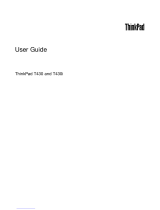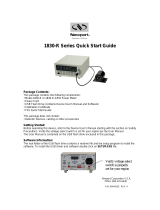
Contents
Read this first . . . . . . . . . . . v
Chapter 1. Finding information . . . . . 1
This guide and other publications . . . . . 1
Finding information with the ThinkVantage
button . . . . . . . . . . . . . . 2
Additional information for Access Help ...3
Chapter 2. Taking care of your ThinkPad
computer . . . . . . . . . . . . . 5
Important tips. . . . . . . . . . . . 5
Be careful about where and how you work 5
Be gentle with your computer . . . . . 6
Register your computer . . . . . . . 6
Carry your computer properly . . . . . 6
Connect the internal modem correctly. . . 6
Handle storage media and drives properly 6
Be sure not to modify your computer . . . 7
Take care in setting passwords . . . . . 7
Care for the fingerprint reader . . . . . 7
Cleaning the cover of your computer . . . 8
Cleaning your computer keyboard . . . . 8
Cleaning your computer display . . . . 8
Chapter 3. Solving computer problems . . 11
Frequently asked questions . . . . . . . 11
Entering the BIOS Setup Utility . . . . . 12
Diagnosing problems . . . . . . . . . 13
HDD diagnostic program . . . . . . 13
Diagnosing problems using PC-Doctor
from the service partition . . . . . . 14
Troubleshooting. . . . . . . . . . . 15
Error messages . . . . . . . . . . 15
Errors without messages . . . . . . . 21
Memory problems . . . . . . . . . 23
Password problems . . . . . . . . 23
Keyboard problems . . . . . . . . 24
Pointing device problems . . . . . . 24
Sleep (standby) or hibernation problems 25
Computer screen problems . . . . . . 27
Battery problems . . . . . . . . . 30
AC adapter problems . . . . . . . . 30
Hard disk drive (HDD) or solid state drive
(SSD) problems . . . . . . . . . . 31
Fingerprint reader problems . . . . . 33
Startup problems . . . . . . . . . 33
Chapter 4. Recovery options . . . . . . 35
Introducing Rescue and Recovery . . . . . 35
Solid state drive (SSD) . . . . . . . 35
Restoring the factory contents . . . . . . 36
Recovering data. . . . . . . . . . . 37
Chapter 5. Upgrading and replacing
devices . . . . . . . . . . . . . 39
Replacing the battery . . . . . . . . . 39
Upgrading the hard disk drive or solid state
drive . . . . . . . . . . . . . . 41
Replacing memory . . . . . . . . . . 48
Chapter 6. Getting help and service . . . 55
Getting help and service . . . . . . . . 55
Getting help on the Web . . . . . . . . 55
Calling the Customer Support Center . . . 55
Getting help around the world . . . . . . 57
Worldwide telephone list. . . . . . . . 57
Appendix A. Warranty information . . . . 63
Types of warranty service . . . . . . . 64
Appendix B. Customer Replaceable Units
(CRUs) . . . . . . . . . . . . . 67
Appendix C. Features and Specifications 69
Features . . . . . . . . . . . . . 69
Specifications . . . . . . . . . . . 70
Appendix D. Notices. . . . . . . . . 73
Notices. . . . . . . . . . . . . . 73
Export classification notice . . . . . . 74
Electronic emissions notices . . . . . . . 74
Federal Communications Commission
(FCC) Statement . . . . . . . . . 74
Industry Canada Class B emission
compliance statement . . . . . . . . 75
Avis de conformité à la réglementation
d’Industrie Canada. . . . . . . . . 75
European Union EMC Directive
conformance statement . . . . . . . 75
© Copyright Lenovo 2008 iii





















